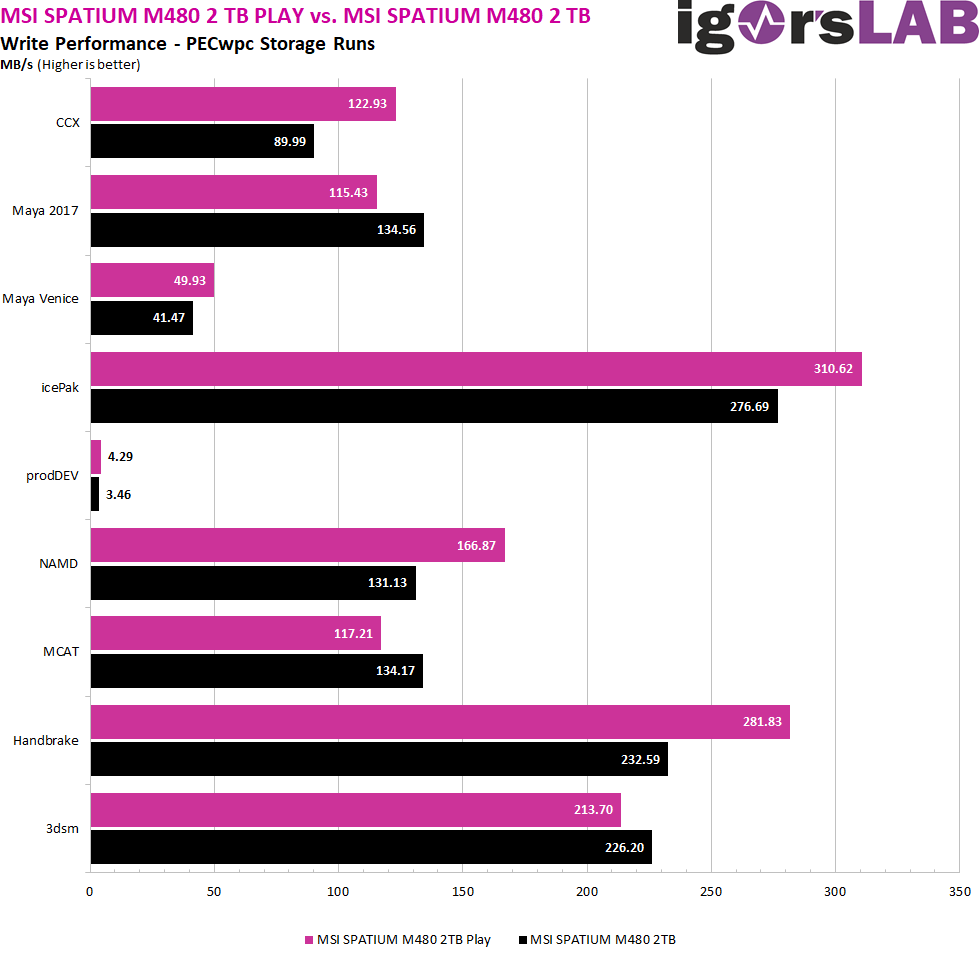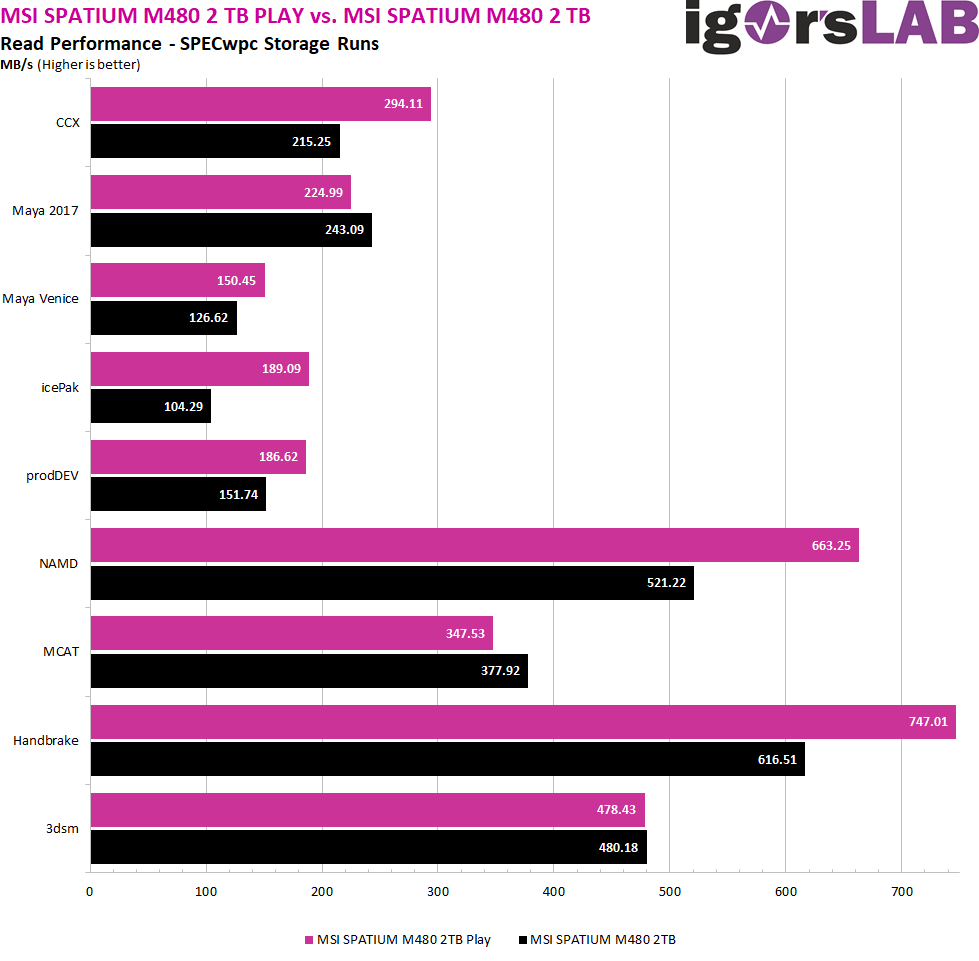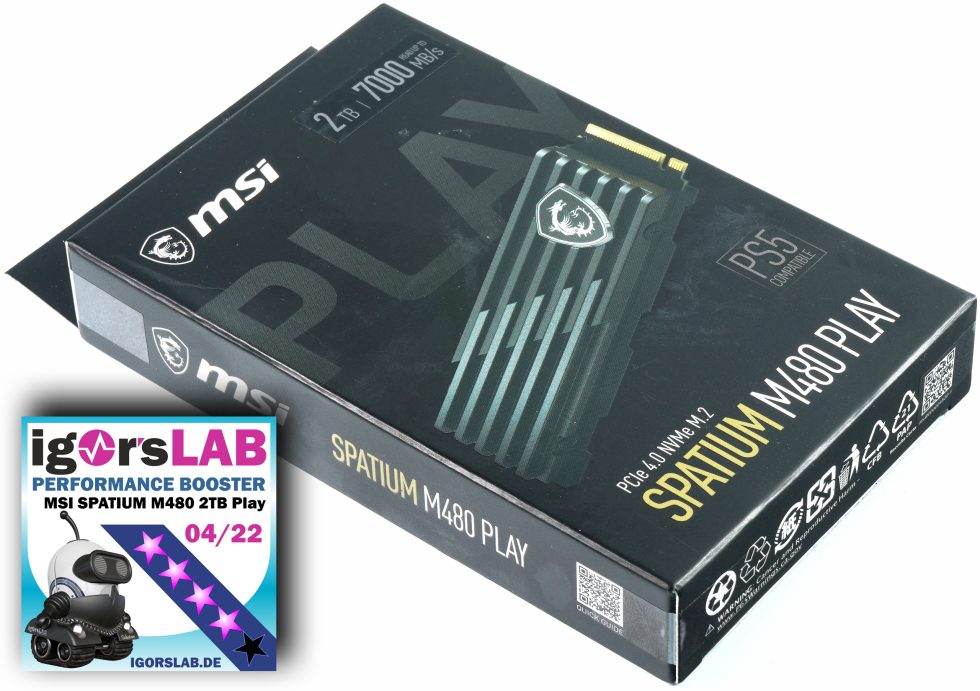We now come to the direct comparison of the two tested SSDs. The following benchmarks namely show very astonishing things, where the MSI SPATIUM 480 PLAY can mostly clearly get ahead (as expected) and is slightly slower on the other hand. When writing, programs like Ansys Icepak and Handbrake benefit enormously, the rate is significantly higher when it comes to writing larger streams. Maya 2017, MCAT and 3dsm, on the other hand, weaken slightly. However, the vast majority of programs benefit from the new flash memory.
Reading is very similar, the performance boost is usually significant and more pronounced than the advantage in writing. The dynamic pSLC cache works in combination with the new NAND after all. At least as long as the memory also technically allows it.
Yes, the performance has also increased more significantly in applications than the synthetic benchmarks might suggest. However, you really have to consider whether you really feel it subjectively and whether it really increases the productivity in the individual case so that the surcharge is worth it. If you can answer yes, you will certainly do everything right with the new SSD. But it also really depends on the applications. Synthetics are not everything.
Summary and conclusion
If we leave the price aside, which will surely adjust according to the actual market availability (that’s why it’s not an explicit buy tip, since you can’t buy it yet), then the MSI SPATIUM M480 2TB Play is actually exactly what is currently still technically feasible for the end user with a PS5 (or a PC) with normal effort. There are already various specimens in this performance class, but MSI has managed to offer a competitive product here. In any case, Micron’s 176-layer NAND is a gain over the older 96-layer variant.
Such an SSD can be recommended to all those who are on the hunt for the last ounce of performance and for whom the 5-year warranty by MSI takes away some of the doubts about how long the controller and the Micron NAND can cope with the switch from pSLC and TLC mode without any losses. It is no secret that this is also due to the interaction between controller and flash memory. But Micron hasn’t just been doing this since yesterday.
Great product, no price yet for the 2TB variant and as always, the last bit of performance is the most expensive. If you want to be beautiful, you have to suffer. Or pay. 🙂




































24 Antworten
Kommentar
Lade neue Kommentare
Urgestein
Urgestein
Urgestein
Moderator
Urgestein
Urgestein
Mitglied
Urgestein
Urgestein
Mitglied
Urgestein
Mitglied
Mitglied
Mitglied
Urgestein
Mitglied
Urgestein
Urgestein
Mitglied
Alle Kommentare lesen unter igor´sLAB Community →